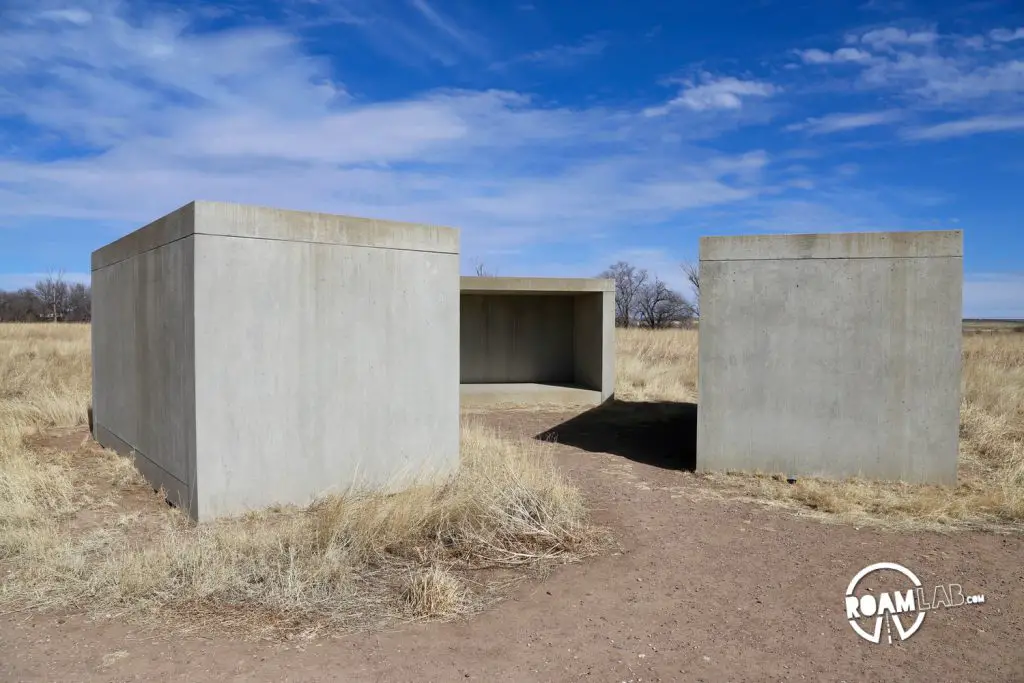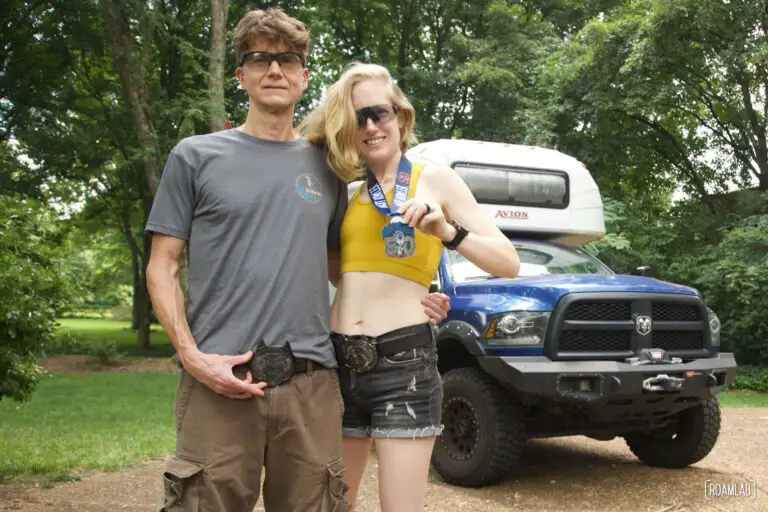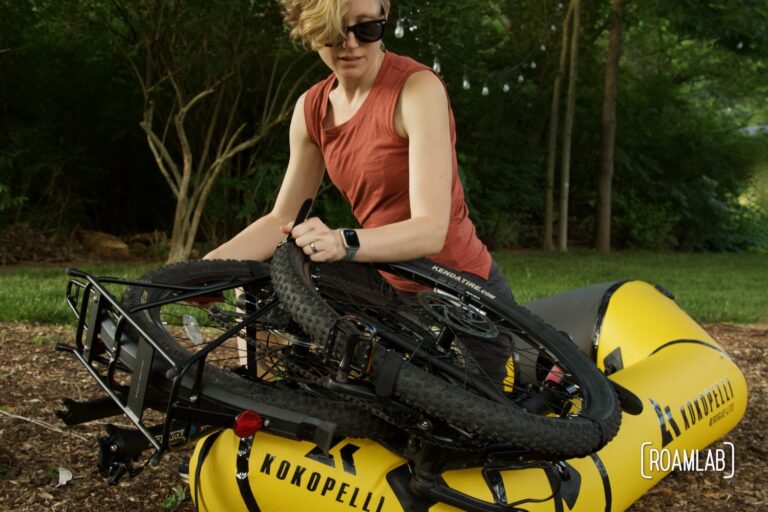The Chinati Foundation is a contemporary art museum. Its houses a collection of permanent installations across the rambling campus of a decommissioned air base. But it isn’t a spot you just wander in to. No, It takes an appointment, a guide, and a lot of time.
Despite the hours posted for the museum, there is only a limited amount of time when you can see the collection. All the tours start before noon. The complete tour certainly has to, it takes six hours. And while we are masters of our own schedules, we thought it better to take the two hour, selection tour. It is a study of minimalism in diverging material forms: concrete, aluminum, light, fabric, and smashed cars. It is home to permanent displays meant for that place, to the exclusion of all others. It’s a place that strives for timelessness despite the constraints of cleaning and replacing aged components. It melds contemporary art with historic structures—even some early doodled murals on mess hall walls are preserved. And it does not allow photography.
The first stop was a single hangar of Donald Judd’s work. It features a regimented variation of one hundred milled aluminum boxes progressing along a concrete floor like some visual progression of chords. The pieces reflect the light and the wide grasslands as seen through the wide windows, a rare modern addition to the predominantly preserved structure.
Next, we visited a whimsical study in fluorescent light across six former barracks by Dan Flavin. The artist plays with expectation through methodical repetition and variation. Traversing the different structures is like a fugue, layering note upon note, chord upon chord. Specially produced fluorescent bulbs have to be stockpiled to keep these art pieces in their original effect. Most of our tour group peters out before we reach the concluding building. They wait for us at the main entry to progress to the next exhibit.
We drove off base to see Robert Irwin’s much more recent work Untitled (dawn to dusk) completed in 2016. it is a luminal threshold between dawn and dusk. Sheer fabric drawn tight across frames that span the room and divide it between light and dark. At the multi threshold transition between white fabric and black, the many layers form moire patterns, introducing a delicate whimsy in an otherwise rigid structure.
Perhaps, the most emotionally vibrant piece is the collection of colorful crushed car chassis by John Chamberlain. They drape and bend with a near delicacy of fabric.
It’s a rather fitting conclusion to the tour as we wander back to our cars. They can crumple too. But we’ll be careful.






